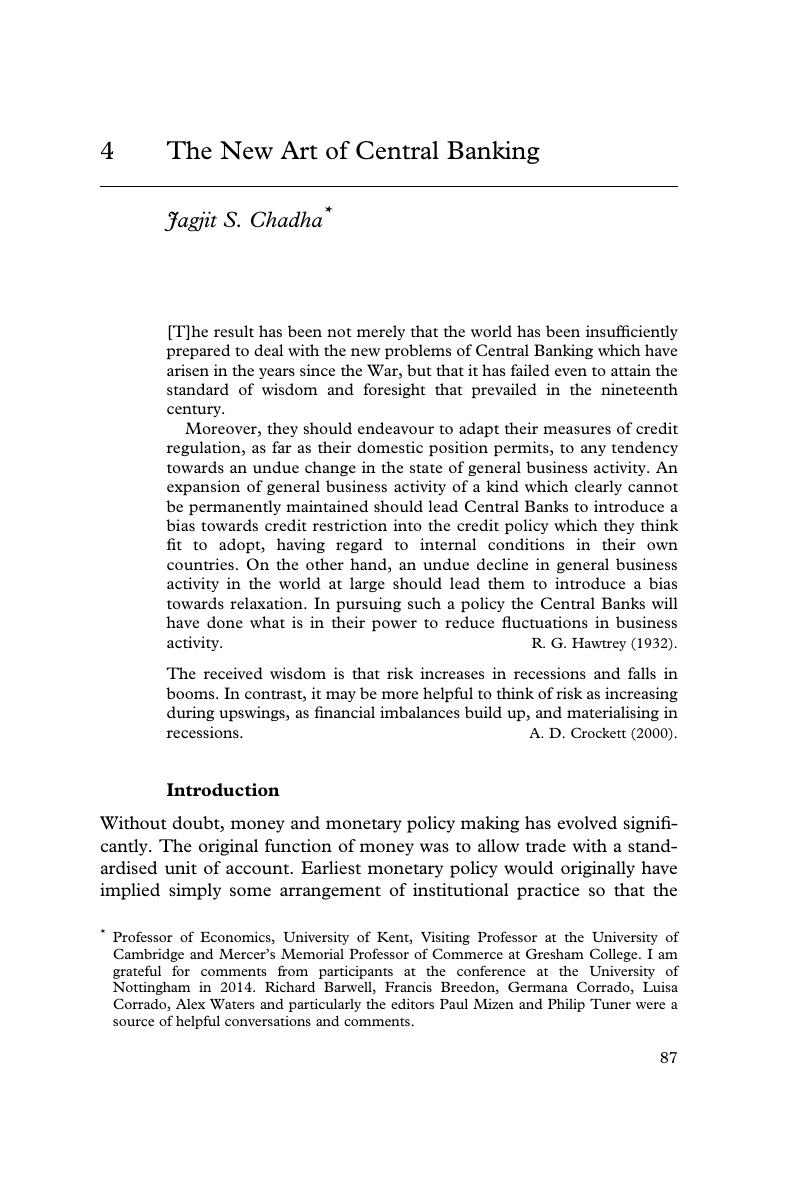Book contents
- Macroprudential Policy and Practice
- Macroeconomic Policy Making
- Macroprudential Policy and Practice
- Copyright page
- Contents
- Contributors
- Introduction
- 1 The Macroeconomics of Macroprudential Policies
- 2 A Liquidity-Based Approach to Macroprudential Policy*
- 3 Financial Intermediation and Monetary and Macroprudential Policies
- 4 The New Art of Central Banking
- 5 The Macroprudential Countercyclical Capital Buffer in Basel III
- 6 On the Use of Monetary and Macroprudential Policies for Small Open Economies
- 7 Capital Flows and Macroprudential Policy
- 8 Macroprudential Policy in a Globalised World
- 9 Systemic Risk of European Banks
- 10 Macroprudential Tools of Systemic Risk Analysis
- 11 When Is Macroprudential Policy Effective?
- 12 Macroprudential Policy
- Index
- References
4 - The New Art of Central Banking
Published online by Cambridge University Press: 09 August 2018
- Macroprudential Policy and Practice
- Macroeconomic Policy Making
- Macroprudential Policy and Practice
- Copyright page
- Contents
- Contributors
- Introduction
- 1 The Macroeconomics of Macroprudential Policies
- 2 A Liquidity-Based Approach to Macroprudential Policy*
- 3 Financial Intermediation and Monetary and Macroprudential Policies
- 4 The New Art of Central Banking
- 5 The Macroprudential Countercyclical Capital Buffer in Basel III
- 6 On the Use of Monetary and Macroprudential Policies for Small Open Economies
- 7 Capital Flows and Macroprudential Policy
- 8 Macroprudential Policy in a Globalised World
- 9 Systemic Risk of European Banks
- 10 Macroprudential Tools of Systemic Risk Analysis
- 11 When Is Macroprudential Policy Effective?
- 12 Macroprudential Policy
- Index
- References
Summary

- Type
- Chapter
- Information
- Macroprudential Policy and Practice , pp. 87 - 107Publisher: Cambridge University PressPrint publication year: 2018
References
- 1
- Cited by

